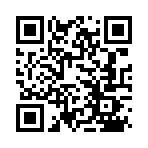| インバウンドでタイ人を集客! 事例多数で万全の用意 [PR] |
Hair Products should address two critical needs: moisture and protein. How much moisture and protein your hair needs depends on a few factors. For one, you must know your hair type and porosity level. One of our recent blog posts was a complete breakdown of hair types.
It's worth investing in products that are moisture balancing to meet the needs of the drier ends and newer roots. If you find your hair is prone to frizzing, choose lightweight smoothing products that will tame and not weigh your style down. If your hair is wavy or curly, a heavier cream or serum may be needed.
If you want to prevent hair loss, you can also prioritize a diet high in healthy proteins, Omega-3 fatty acids, and fresh fruits and vegetables. If you're trying to prevent baldness, you can take vitamins such as iron, biotin, vitamin D, vitamin C, and zinc.
The bottom line Type 1 hair is straight. Type 2 is best described as wavy. Type 3 hair is curly, and type 4 is coily. You may have different curl patterns on different parts of your head.
Mix a leave-in conditioner , castor oil (emollient), and water in a spray bottle and spritz it onto your hair daily to keep your locks hydrated. Give a hot oil treatment to your tresses (coconut and olive oils are good choices) 20 minutes before washing them to provide an extra moisture boost.
For the average person, every other day, or every 2 to 3 days, without washing is generally fine. “There is no blanket recommendation. If hair is visibly oily, scalp is itching, or there's flaking due to dirt,” those are signs it's time to shampoo, Goh says.
Oil your hair no more than 1 to 2 times a week. Leave it on for approximately an hour or two but you don't need to leave it on longer than that. When you leave oil on too long you run the risk of zits because oil will run down onto your skin and you also don't add any real benefit by leaving it on longer.
Using too much shampoo, brushing or combing your hair when it's wet, rubbing hair dry with a towel, or brushing too hard or too often can all strain your strands and make them break. Two big cause of breakage include braids that are too tight and weaves that weight down the hair.
It depends. “If a follicle has closed, disappeared, scarred, or not generated a new hair in years, then a new hair wouldn't be able to grow,” Fusco says. But if the follicle is still intact, yes, it is possible to regrow the hair—or to improve the health of the existing thinner hairs.
Leaving your oil on your hair for more than one day is a bad idea. Even one day is not recommended since it can cause the oil to form a layer on your scalp, clogging your pores, accumulating dandruff and attracting dirt. Apart from that, it will make your scalp constantly feel greasy and dirty.
